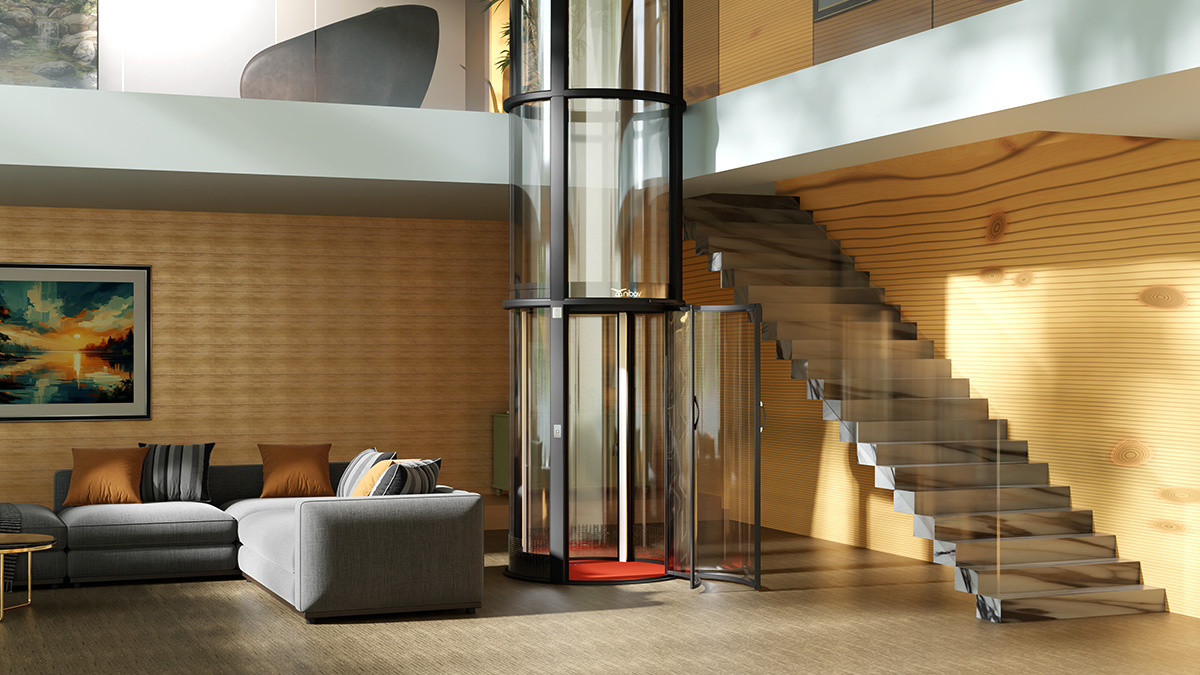
Table of Contents
Demand for home elevators has skyrocketed as more Australians choose multi-level living. Given accessibility and convenience, building a house elevator is becoming more and more common in Melbourne, where contemporary design sometimes mixes with limited space. If you want an elevator for your house, choose between a hydraulic lift and a little home elevator. Every kind has advantages and drawbacks, so knowing the variations will enable you to choose with knowledge. With an eye toward their features, price, and fit for Melbourne houses, we will contrast these two well-known models of home elevators in this blog article.
What Are Compact Home Elevators?
Compact house elevators are made for homes that require an aesthetically pleasing, space-saving, and effective lift solution. Smaller than conventional types, these elevators are ideal for households with limited space. Usually fitted in existing houses with little disturbance, compact home elevators may be tailored to complement your interior decor.
A main characteristic of small residential elevators is their adaptable form. Many types have a sleek, contemporary style and may be fitted in confined areas, including stairways or narrow nooks. For Melbourne, where urban space is highly valued, homeowners trying to maximize space will find great benefits in being able to construct a house elevator without needing any structural modifications.
What Are Hydraulic Lifts?
Usually, more sturdy than small elevators, hydraulic lifts are suitable for both homes and businesses. Although they are usually more complicated and bigger in construction, hydraulic lifts can handle higher weights and provide consistent motion.
The hydraulic system moves the elevator vehicle with pressurized fluid, providing a high weight capacity and a smooth trip. Installing a hydraulic lift in your house, however, might be more difficult as it requires a pit for the hydraulic cylinder and enough area for the system to operate as intended.
Although bigger buildings often have hydraulic lifts, high-end residences in Melbourne, especially those with numerous floors and a need for increased weight capacity, may also choose them.
Key Differences Between Compact Home Elevators and Hydraulic Lifts
Space Efficiency
Little residential elevators are outstanding in terms of space-saving. Made especially for households with limited space, they may fit into smaller locations and require less installation room. This makes them perfect for Melbourne’s metropolitan setting, where many residents have smaller, multi-level homes or compact floor layouts.
Conversely, hydraulic lifts require additional space. Larger houses or properties with a more roomy layout would be better suited for them as they need a hydraulic cylinder, pit, and usually extra area for the pump and engine. Their increased installation area makes them less suitable for townhouses or flats with limited available space.
Cost
Generally speaking, small house elevators are less expensive than hydraulic lifts. Reduced installation complexity and smaller dimensions usually translate into a cheaper upfront cost. For homeowners who desire the comfort of a lift without the hefty cost, small elevators are thus an appealing choice.
However, hydraulic lifts cost more because of their more complicated installation requirements and bigger systems. Furthermore, hydraulic lifts are less energy-efficient than compact elevators, as they need more electricity to operate, which might raise operating expenses.
Energy Efficiency
Usually more energy-efficient than hydraulic lifts are compact residential elevators. Their smaller motors and lighter systems run on less power, therefore helping to cut energy costs. Many small elevators also have energy-saving technology, therefore enhancing their efficiency.
Hydraulic lifts move the elevator vehicle using pressurized fluid, which requires more energy. Although hydraulic systems are strong and smooth, their energy consumption is usually higher, which might influence operating expenses over the long run.
Maintenance Needs
Compact residential elevators are usually less expensive and easier to maintain. Usually, with simpler equipment and fewer moving components, they are also less expensive and less expensive to operate. Although routine maintenance includes verifying smooth functioning and inspecting the electrical system, hydraulic lifts often require less care than it requires.
Hydraulic lifts require more regular maintenance due to their hydraulic cylinders and pumps. The hydraulic fluid must be checked and replaced regularly, and the components of the pump and cylinder must be examined for wear. This additional upkeep might raise the long-term expenses of owning a hydraulic lift.
Noise and Vibration
Regarding noise, small house elevators usually run much less than hydraulic lifts. Their electric motors don’t create the same vibrations and noises hydraulic systems generate. Because of the hydraulic pump and fluid pressure system, hydraulic lifts—while usually silent while in motion—may sometimes hum or whirl.
Pros and Cons of Compact Home Elevators
Pros
- Space-Saving: Perfect for tiny homes, or flats with limited room, space-saving designs
- Cost-Effective: Lower installation and running expenses make them a perfect choice for financially strapped homes.
- Aesthetic Flexibility: Customization of aesthetic flexibility allows one to complement a range of home designs, including contemporary and minimalist ones.
- Easier Installation: Less structural changes needed mean speedier and less intrusive installation times.
Cons
- Weight Limitations: Some families may be worried about Compact elevators usually having lesser weight capacity.
- Smaller Capacity: The car’s tiny capacity may only fit a few people or bulky objects like furniture.
- Limited Speed: Compact elevators may only be fit for moderately tall buildings or houses with up to three or four stories.
Pros and Cons of Hydraulic Lifts
Pros
- Higher Capacity: Larger families or households with additional mobility requirements would find hydraulic lifts perfect for carrying more people and bigger cargo.
- Smooth Operation: Particularly helpful for homes that must move mobility equipment or bulky goods, provides a smooth and steady ride.
- Heavy-Duty Performance: Capable of lifting more weight, heavy-duty performance qualifies for multi-story houses with more living areas.
Cons
- Space-Intensive: Space-intensive calls for a greater area for the hydraulic system and a pit, among other installations.
- Higher Costs: Generally speaking, the original installation and continuous maintenance expenses are higher for large elevators than for small elevators.
- More Complex Installation: Especially in older houses, structural changes may cause disturbance during installation.
Which Type Is Right for Your Home in Melbourne?
Your house, budget, and demands will mostly determine the elevator you choose for it. A small home elevator is a preferable choice if your Melbourne tiny or multi-level house has limited room. Smaller houses or flats would find these elevators perfect since they provide a reasonably priced, space-efficient option with the least disturbance.
Conversely, if you need a lift with more capacity and live in a bigger house with many floors, a hydraulic lift may be a better option. More suited for households needing heavy-duty performance, hydraulic lifts provide the strength and smoothness required to raise big loads or bigger families.
Conclusion
Depending on the size and requirements of your house, hydraulic lifts, and small house elevators have different benefits. Compact elevators are ideal for homeowners seeking a reasonably priced, space-efficient option, while hydraulic lifts provide strong performance for bigger houses or those needing more lifting capability.
Before deciding on anything, see a Melbourne-based elevator provider to assist you in deciding on the ideal solution for your house. Knowing the advantages and drawbacks of every alternative will help you decide whether a heavy-duty lift or an elegant, space-saving elevator best suits your family and house.
